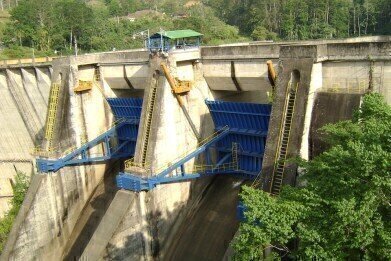Environmental Laboratory
What’s the Problem with Costa Rica’s Renewable Revolution?
Jan 03 2017
Last year, Costa Rica generated an unprecedented 98.1% of all their electricity needs from renewable sources. This incredible feat has marked the Central American country out as a leading light in environmental technology and an example for other, similar-sized nations to follow.
However, the renewable revolution happening in Costa Rica might not be quite as radical as it seems. Though the country uses a mix of wind, solar, hydrothermal, biomass and hydroelectric power to achieve its needs, its over-reliance on the latter threatens to compromise its ecological image.
An impressive feat
In its push to become one of the greenest countries in the world, Costa Rica successfully produced almost all of its electricity from renewables in 2015. This consisted of 250 days of carbon-neutral energy generation, including a 110-day stretch without burning a single fossil fuel to light a home or power an appliance.
While the achievement is certainly worthy of praise, it’s perhaps not quite as it seems once you dig a little deeper beneath the surface. For starters, electricity comprises less than 30% of the country’s total energy consumption, with the remaining 70% consisting of fossil fuel combustion used to fuel vehicles and heat buildings.
Secondly, Costa Rica depends enormously on hydroelectric power to achieve its green aims, with the vast majority of the electricity it produces being generated in this manner. Though hydropower has been touted as an important technology of the future even here in Britain, critics of the practice have suggested that it is not as environmentally friendly as it would like to pretend.
An excess of methane
In order to create hydroelectric power, large swathes of land must be flooded with water to create reservoirs. In the process, biodiversity is greatly reduced as animals flee to other habitats. What’s more, the plant life that is left behind is worked upon by bacteria and rots away, releasing methane as a by-product.
Along with carbon dioxide (CO2), methane is the primary proponent of climate change since it traps heat in the Earth’s atmosphere and acts as a catalyst for global warming. Though methane might have a much shorter lifespan than CO2, it’s far more effective at trapping heat. Indeed, some sources estimate that it could be over 30 times as effective a greenhouse gas than CO2, which is a real cause for concern for environmentalists.
With this in mind, studies in the past have found that the amount of methane produced by hydroelectric dams all over the world is equivalent to 907 million tonnes of CO2 every year. That’s more greenhouse gases than are produced by the entire countries of Japan, Germany, Saudi Arabia and Brazil. Clearly, hydroelectric energy is not quite as squeaky-clean as it seemed at first glance.
Of course, the work that Costa Rica doing is commendable in its own right and the nation is clearly striving to meet the ambitious targets agreed upon at the COP21 climate talks in Paris last year. However, diversifying its renewable portfolio wouldn’t hurt – and aspiring countries looking to the Central American nation for inspiration would do well to take note.
Digital Edition
IET 34.2 March 2024
April 2024
Gas Detection - Biogas batch fermentation system for laboratory use with automatic gas analysis in real time Water/Wastewater - Upcycling sensors for sustainable nature management - Prist...
View all digital editions
Events
Apr 22 2024 Hannover, Germany
Apr 22 2024 Marrakech, Morroco
Apr 23 2024 Kuala Lumpur, Malaysia
Apr 23 2024 Kintex, South Korea
Apr 23 2024 Edmonton, AB, Canada


















